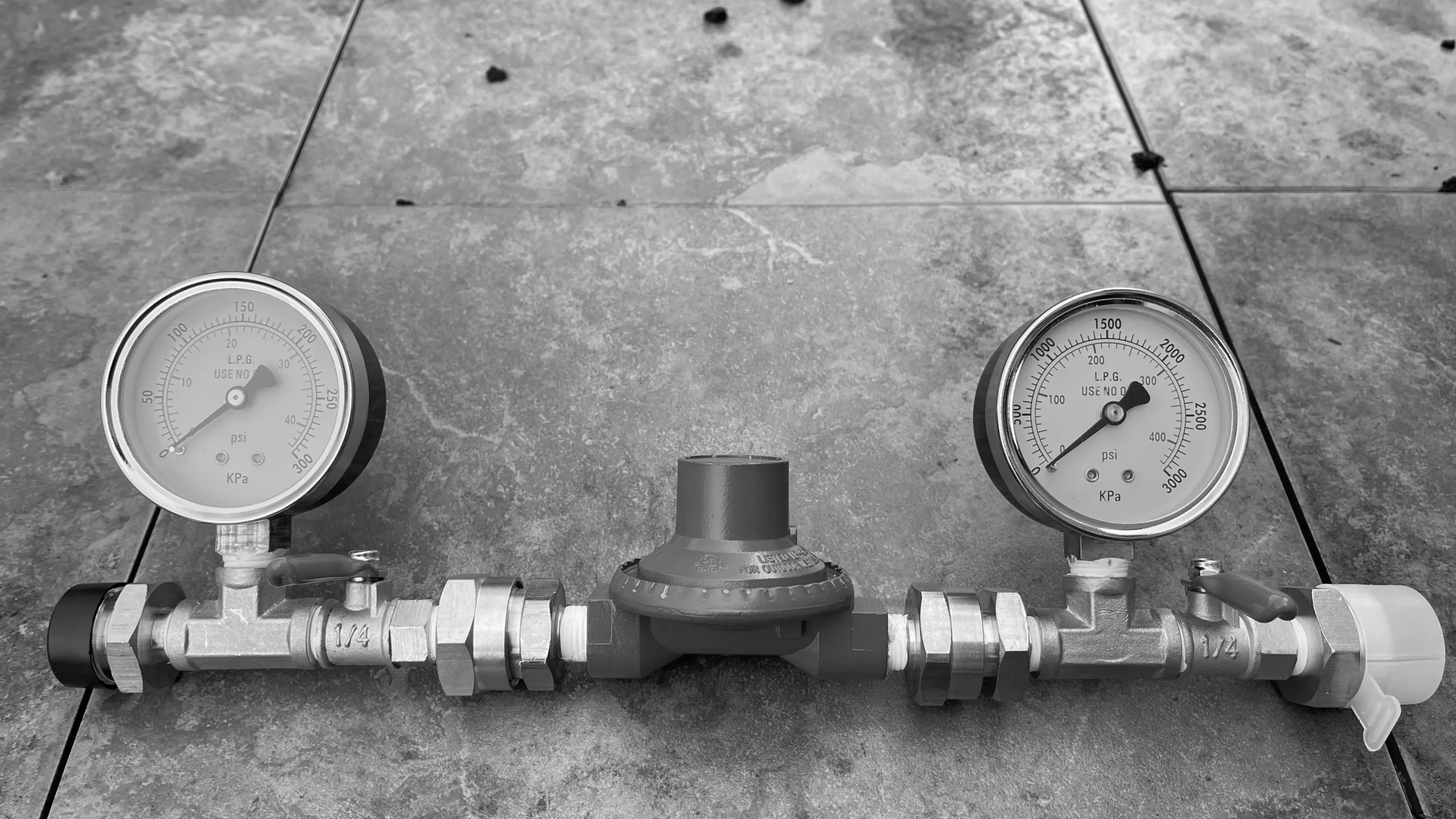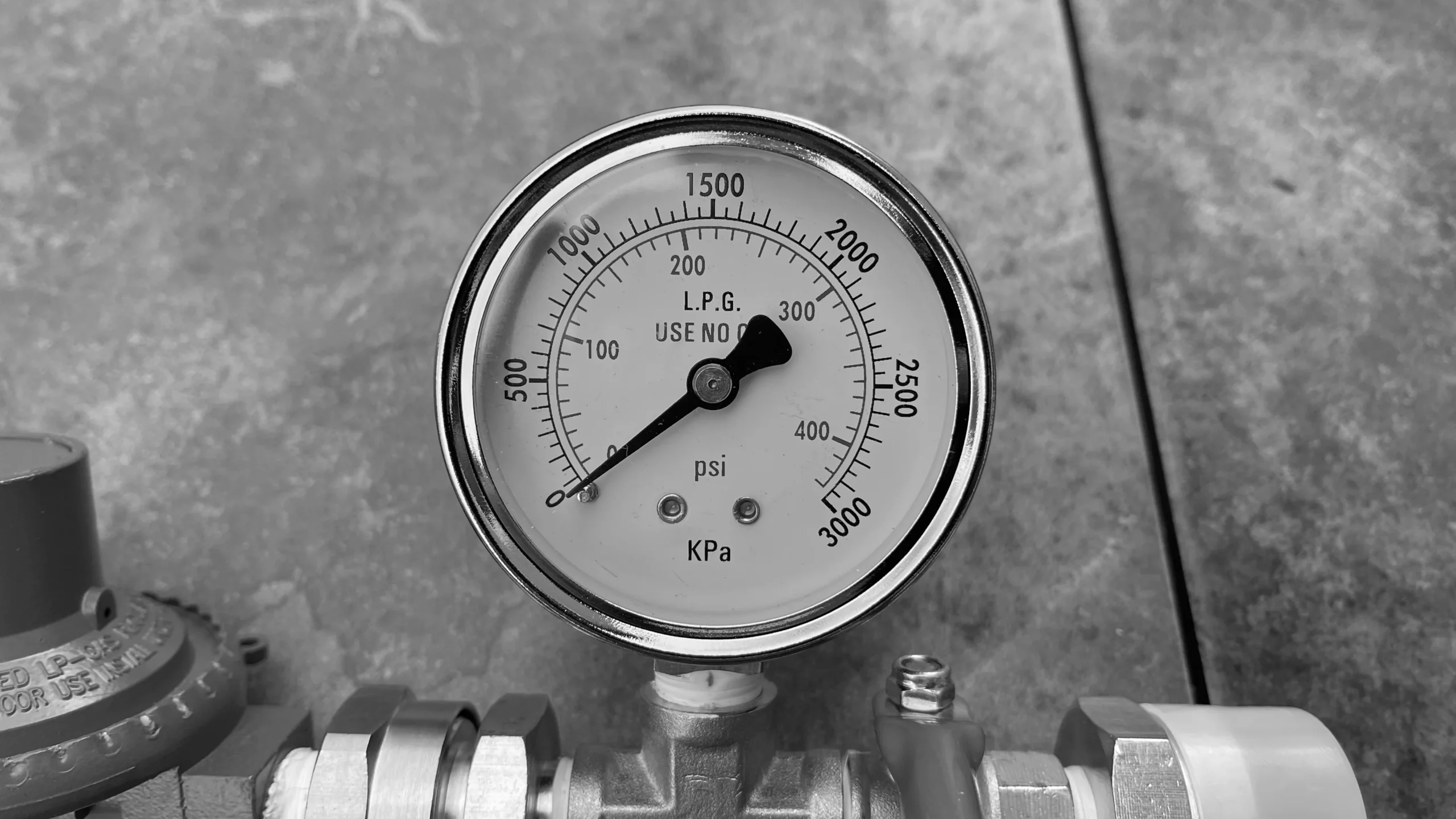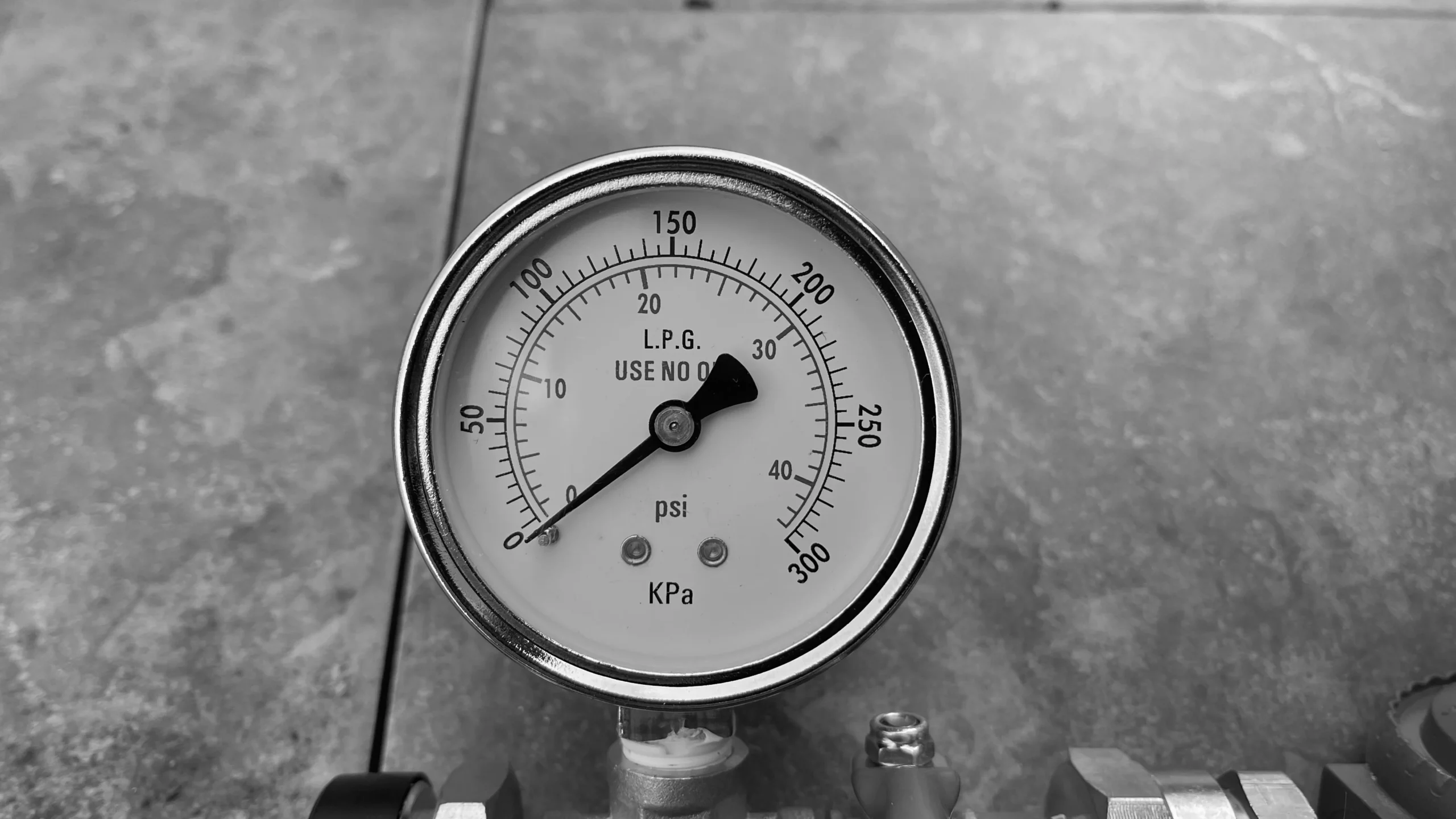Many portable stoves are designed to operate on disposable butane canisters. These canisters deliver fuel at their natural vapour pressure, which varies strongly with temperature. While convenient, butane has a serious drawback: it becomes unreliable in cold weather, and the stove may fail to operate at all. Propane, on the other hand, remains strongly pressurised even at sub-zero temperatures. The difficulty is that propane pressure is much higher than butane pressure and can damage stoves that are not designed for it.
A practical solution is to use a high-pressure regulator that reduces propane pressure to a safe and stable level, very close to what a butane canister delivers on a warm day. This allows you to use inexpensive and widely available propane cylinders while still protecting your stove.

You can use a high-pressure to low-pressure conversion system to bridge the gap between propane’s power and butane’s control. This system involves a high-pressure regulator that reduces the pressure from the propane tank to a lower, more manageable level for your butane appliances.
Transform Your Butane Stove with this Propane Hack: Safe and Affordable! (Video)
Propane vs Butane: The Camping Stove Pressure Showdown. What You Need to Know! (Video)
The Pressures of Butane and Propane
The table below shows the approximate vapour pressures of butane and propane at common outdoor temperatures. For clarity, values are given in kilopascals (kPa) as the primary unit, with pounds per square inch gauge (psig) in parentheses.
| Temperature | Butane Canister Pressure | Propane Cylinder Pressure | Regulated Propane Output |
|---|---|---|---|
| 0 °C (32 °F) | ~29 kPa (4 psig) | ~480 kPa (70 psig) | 200 kPa (29 psig) |
| 10 °C (50 °F) | ~55 kPa (8 psig) | ~550 kPa (80 psig) | 200 kPa (29 psig) |
| 15 °C (59 °F) | ~83 kPa (12 psig) | ~620 kPa (90 psig) | 200 kPa (29 psig) |
| 20 °C (68 °F) | ~110 kPa (16 psig) | ~690 kPa (100 psig) | 200 kPa (29 psig) |
| 25 °C (77 °F) | ~140 kPa (20 psig) | ~760 kPa (110 psig) | 200 kPa (29 psig) |
| 30 °C (86 °F) | ~170 kPa (25 psig) | ~830 kPa (120 psig) | 200 kPa (29 psig) |
Why 200 kPa?
A butane canister at 30 °C has a pressure of about 170 kPa (25 psig). At 32 °C it reaches about 207 kPa (30 psig). The regulator used here fixes propane at 200 kPa (29 psig). This is nearly identical to a butane canister on a hot day and is well within the safe operating range of both simple stoves and those with micro-regulators.
Because the regulator is a fixed output, the user does not need to make any adjustments. Whether the propane cylinder is warm or cold, the will be around 200 kPa.
Cold Weather Advantage
The weakness of butane is obvious below freezing. At 0 °C, a butane canister delivers only about 29 kPa (4 psig). At −10 °C, pressure collapses to about 10 kPa (1.5 psig), and most stoves will fail to light. Propane is very different. At −20 °C, a propane cylinder still holds about 275 kPa (40 psig), more than enough to run a stove effectively.
With the regulator holding propane steady at 200 kPa, your stove will light and cook reliably even in winter conditions where butane becomes useless.

Safety Considerations
Most cassette-style butane stoves include a built-in overpressure safety shut-off that activates between 400 and 600 kPa (58–87 psig). By limiting propane to 200 kPa (29 psig), the regulator ensures that the stove always operates far below this level.
Photos on this site show the gauges used to demonstrate the pressures. The gauge is dual-scale. The outer black markings are in kilopascals, and the inner red markings are in pounds per square inch. These readings are gauge pressure, meaning they show pressure above the surrounding air. This is exactly what matters for stove operation.
Practical Use
- Connect the regulator to your propane cylinder and to the stove adapter.
- Check the gauge: it should read close to 200 kPa (29 psig).
- Perform a leak test with soapy water before lighting.
- Light the stove as you normally would with a butane canister.
Conclusion
By using a 200 kPa regulator, propane can be safely substituted for butane in portable stoves. The regulator protects simple stoves and micro-regulated stoves alike, while delivering consistent and predictable performance. The greatest benefit is that propane continues to function in cold weather, allowing you to cook confidently year-round, while still staying well within the safe operating limits of your stove.
LPG Mix Vapour Pressure (metric)
Antoine equations (NIST) + Raoult’s law. Inputs are temperature (°C) and mass percentage of propane in the liquid. Outputs both absolute and gauge pressure.
Set Patm from your city (current weather), from your location, or from elevation
Why might “Use my location” fail?
- Most browsers require HTTPS. If the page is not served over https://, geolocation is blocked.
- You may have blocked location for this site. In Chrome: click the padlock → Site settings → Location → Allow → reload.
- Private browsing or strict tracking settings can also block it. Use the Use city or Use coordinates options instead.
Result at 20 °C
Assumes ideal liquid solution; liquid composition given by mass % is converted to mole % internally.
Show table (0, 10, 15, 20, 25, 30 °C)
| T (°C) | Propane Psat (kPa) | n-Butane Psat (kPa) | Mixture Absolute (kPa) | Mixture Gauge (kPa) |
|---|
Notes: Antoine constants from NIST; temperature in kelvins; P* returned in bar and converted to kPa. Mix via Raoult’s law on mole fraction derived from mass %. User-facing pressures shown as gauge unless labelled absolute. Use certified regulators and hoses. This tool is informational and does not replace professional engineering advice.


